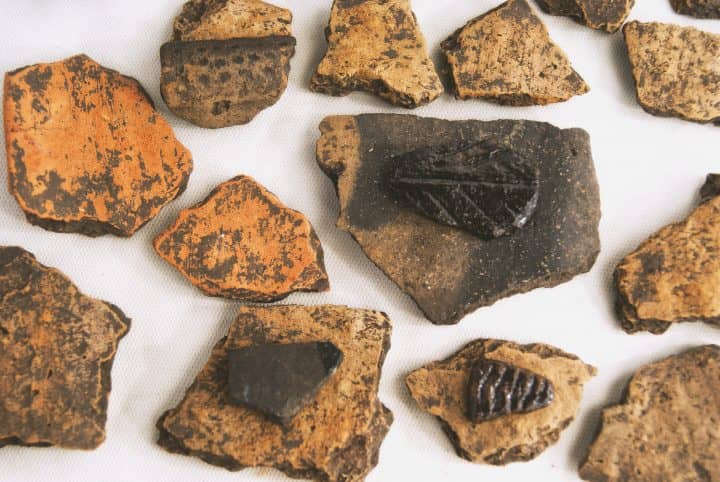 The Paleolithic Era took place over 4000 years ago throughout Europe, and the area where modern Greece was one of those regions. Very few clues exist as to what life was like during this era, which is also commonly referred to as the Stone Age. Earlier Paleolithic people in Greece set up camp in caves, usually remaining close to the coastline in order to have easy access to the ocean’s resources.
The Paleolithic Era took place over 4000 years ago throughout Europe, and the area where modern Greece was one of those regions. Very few clues exist as to what life was like during this era, which is also commonly referred to as the Stone Age. Earlier Paleolithic people in Greece set up camp in caves, usually remaining close to the coastline in order to have easy access to the ocean’s resources.
Are you wondering what the Paleolithic Era, or the Stone Age, was like in the region we now know of as Greece? Here’s more information:
How Early Greeks Lived
The Franchthi Cave provides an excellent example of how the early Greeks lived. However, it wasn’t long before these groups started to branch out and explore. One thing that researchers have been able to uncover is that certain Greek civilizations had become very advanced by the end of this era, establishing settlements that exhibit evidence of evolved artwork, nuanced knowledge of constructing dwellings, and a social hierarchy. In Macedonia and Thessaly, stone tools that have been left behind demonstrate that these communities were able to innovate and work together to achieve common goals.
Greek Paleolithic Settlements
Early Greek settlements were spread out during the Stone Age, allowing a number of locales around the Aegean Sea to serve as cradles of Greek civilization. After Africa, this geographical area is the most interesting to scientists who study the genesis of the modern human. In the Petralona cave, which is located on the Chalkidiki peninsula of Greece, a shepherd exploring the area in 1959 discovered a humanoid skull that dates back to 700,000 years ago. Obviously, this was long before the Stone Age, but it attests to just how long people had been making their home in the region. Indeed, for those who are fascinated by early humans, a trip to Greece is absolutely necessary.
Recent evidence has even unearthed evidence of Neanderthals on the island of Naxos, indicating just how important this area is when it comes to investigating the origins of modern humans. During the Stone Age in Greece, culture accelerated at an extraordinarily rapid pace. It’s not surprising that noted historian Will Durant stated that the Minoans were the “first link in the European chain.” When all the Stone Age Greek cultures are examined, it seems that this statement could be made about each of them.
Into the Bronze Age
In the Stone Age times of the Greek region, the advancements were so extreme that humans literally started to emerge from caves and work together to create fortified housing that would withstand the elements. They built societies and started to develop technologies that would make it easier to acquire and store food.
Although few open air sites exist dating back to this period, the ones that are still in existence attest to the progress of early Greeks during the Paleolithic Era. In Epirus and areas such as Sesko, the early advancements can easily be seen. Providing a springboard to the Bronze Age and leading to inventions such as the wheel, the achievements of early Greek humans cannot be overstated.
The Paleolithic Era was part of Greece’s past. Although not much is known about this time, we can gather clues.
Source:

